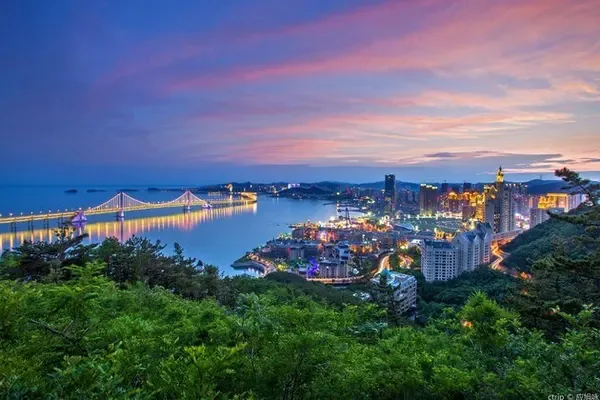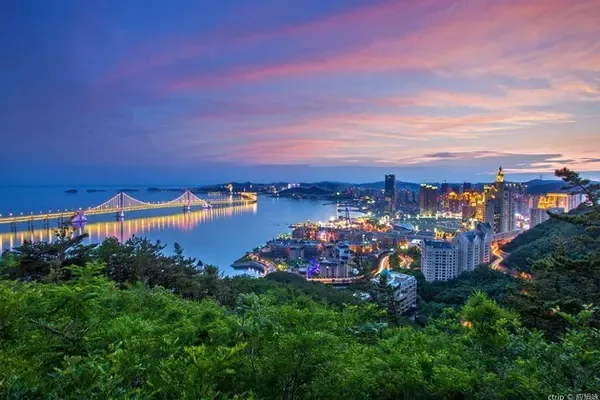Transportation: High Speed Rail
I have always believed that the east of the Forbidden City and the south of the Forbidden City are the most worthwhile places to explore. During this trip to Beijing, I spent a long time in this area, and I really had an addiction to exploring old Beijing.
Accommodation: Yingxiang City Hotel (Beijing Wangfujing Branch)
The most important consideration when choosing to live here is the location. The hotel is located at No. 9 Shijia Hutong within the target area, and Dengshikou Station of Line 5 is within easy reach. Taking this as a starting point, no matter where you go, it is very convenient and you can arrive quickly. It can be said to be the first choice for accommodation. The hotel is in the alley, the facilities are very modern, clean and hygienic, the hotel is close to Wangfujing, it is very convenient to eat, drink and have fun. It really feels like a new way of living in an old alley, and the front desk staff is also very friendly. I originally reserved a king bed room with a large window and a view at his house. After arriving at the store, I was upgraded to a suite with a bedroom for free. The price is very high. Very nice! The apartment in his house is really very big in a place like Beijing where every inch of land is very expensive. The area is more than 40 square meters by visual inspection, and it also has a bathtub sofa.
Day 1: Historians Museum, Wangfujing, Forbidden City, Qianmen Street
I bought an afternoon ticket for the Forbidden City, and set off after breakfast at the hotel at 9 am. First, I visited the Historian Museum in the same hutong as the hotel. It took about an hour. The exhibition hall inside displayed the life in the old Beijing hutong. Miniature models of courtyard houses, and biographies of historical celebrities in some hutongs. Afterwards, I walked to Wangfujing, which is indeed a shopping paradise in Beijing. There are a variety of luxury brands, and the buildings are also very distinctive. In the noodle restaurant, I ate a bowl of special noodles with fried sauce. I was full and ready to go to the Forbidden City, the main destination of today. Say the important thing three times, you must bring your ID card, you must bring your ID card, you must bring your ID card.
The Forbidden City in Beijing is the royal palace of the Ming and Qing dynasties in China. It used to be called the Forbidden City and is located in the center of the central axis of Beijing. The Forbidden City in Beijing is centered on three main halls, covering an area of about 720,000 square meters, with a construction area of about 150,000 square meters. There are more than 70 palaces of different sizes and more than 9,000 houses.
The buildings in the Forbidden City in Beijing are divided into two parts: the outer court and the inner court. The center of the Outer Dynasty is the Hall of Supreme Harmony, the Hall of Central Harmony, and the Hall of Preserving Harmony, collectively referred to as the Three Great Halls, where the state holds grand ceremonies. The left and right wings of the three halls are supplemented by two groups of buildings, the Wenhua Hall and the Wuying Hall. The center of the inner court is Qianqing Palace, Jiaotai Palace, and Kunning Palace, collectively referred to as the Housan Palace, which is the main palace where the emperor and empress live. Then there is the Royal Garden. On both sides of the Housan Palace are the East and West Sixth Palaces, which are the places where the concubines live and rest.
Qianmen Street is a very famous commercial street in Beijing. Located on the central axis of the capital, it starts from Moon Bay at Qianmen in the north, ends at Tianqiao intersection in the south, and connects with Tianqiao South Street. On the west side of the West Sixth Palace is the Zhongzheng Hall and other Buddhist hall buildings. In addition to the Outer Dynasty and the Inner Court, there are two parts of the Outer East Road and the Outer West Road.
After visiting the Forbidden City, walk around the walls of the Forbidden City and return to the second stop, Qianmen Street.
Qianmen Street is a very famous commercial street in Beijing. Located on the central axis of the capital, it starts from Moon Bay at Qianmen in the north, ends at Tianqiao intersection in the south, and connects with Tianqiao South Street.
The long history of Qianmen Street has created many time-honored Chinese brands here, such as Liubiju Sauce Garden, Tongrentang Pharmacy, Ruifuxiang Silk Cloth Store, Changchuntang Pharmacy, Neiliansheng Shoes Store, Zhang Yiyuan Tea House, and Yueshengzhai There are 16 time-honored shops such as the soy sauce shop and the siu mai shop in Duyi, lined up on both sides of the road.
Day 2: Gulou East Street, Shichahai, Nanluoguxiang, Guijie
Depart from the hotel at 8 o'clock in the morning, get off at Beixinqiao on Dengshikou Line 5, and explore all the way west.
In terms of the overall layout of Beijing, everything is based on a north-south central axis in the center of the city, and the Bell and Drum Tower is at the northernmost end of the central axis, and the Bell and Drum Tower is the starting point on the west side of Gulou East Street. The total length of Gulou East Street is about 1098 meters, and the width is about 23 meters. From the east to the west of Gulou East Street, and from the north to the south, the hutongs are Xiaojingchang Hutong, Shoubi Hutong, Beiluogu Alley, Nanluogu Alley, Baochao Hutong, Hougulouyuan Hutong, Caochang Hutong, etc.
Shichahai is a historical and cultural tourism scenic spot in Beijing and a historical and cultural protection area in Beijing. It is located in Xicheng District, the central city, adjacent to the central axis of Beijing. With a water area of 336,000 square meters, it is connected to the waters of Zhongnanhai. It is the only open scenic spot with open water in the inner city of Beijing. It is also a historical block with the largest area and the most complete preservation of style and features in Beijing.
Nanluoguxiang is an alley located in the Jiaodaokou area on the east side of Beijing’s central axis. It starts from Gulou East Street in the north and reaches Ping’an Street in the south. It is 8 meters wide and 787 meters long. It is one of the oldest blocks in Beijing with a history of more than 740 years. It is also among the 25 planned old city protection areas. Because the terrain is high in the middle and low in the north and south, like a hunchback, it is named Luoguo Lane. In the Qing Dynasty, the "Complete Map of the Capital" drawn in the fifteenth year of Qianlong (1750) was renamed Nanluoguxiang.
Gui (Guǐ) Street is located in Dongzhimen, the west section of Dongzhimen Overpass on the Second Ring Road, and the east end of Jiaodaokou East Street in the west. Today, this street is also an excellent place for the concentrated display of Beijing delicacies.
Guijie Street has become a representative of Beijing's food culture and a symbol of fashionable catering. Guijie Street has also become a yearning, a place of joy in people's hearts, and even a topic of conversation after dinner. Many people's experience of "night tour" in the capital starts here; people will choose to spend many exciting days in Beijing, such as the success of the Olympic bid, the Chinese football going to the world, the defeat of Japan in the Asian Cup, etc. Or on important or exciting anniversaries, people vent all night here. Everyone sings, drinks, shouts, hugs, and cries together. The whole street is immersed in the atmosphere of the time. This is the current Guijie Street.
Day 3: Mutianyu Great Wall
The hotel chartered a car at a reasonable price. We made an appointment to pick it up at 9:30 in the morning. After more than an hour, we arrived at today's destination, Mutianyu Great Wall.
The Mutianyu Great Wall[1] in Beijing is located in Huairou District, Beijing, 73 kilometers away from the urban area of Beijing. It has a long history and splendid culture, and enjoys the reputation of "the Great Wall, Mutianyu's unique beauty" both at home and abroad. There are many mountains in the scenic area, and the vegetation coverage rate is over 90%. With a total length of 5,400 meters, the Great Wall is the longest in China[2] and one of the famous sixteen scenic spots in Beijing, a national AAAAA-level tourist area
The Mutianyu Great Wall was built in 1368 by Zhu Yuanzhang's general Xu Da on the ruins of the Northern Qi Great Wall. It is the essence of the Great Wall of the Ming Dynasty. This section of the Great Wall is connected to Gubeikou in the east and Juyongguan in the west. It has been an important military point to defend Gyeonggi since ancient times. There are famous landscapes such as Zhengguantai, Dajiaolou, and Yingfei. ancient rhyme
On the return trip, I went back to the hotel and had a good sleep. The next morning, I returned to my hometown by high-speed train. A happy end to the three-day free travel in Beijing!


